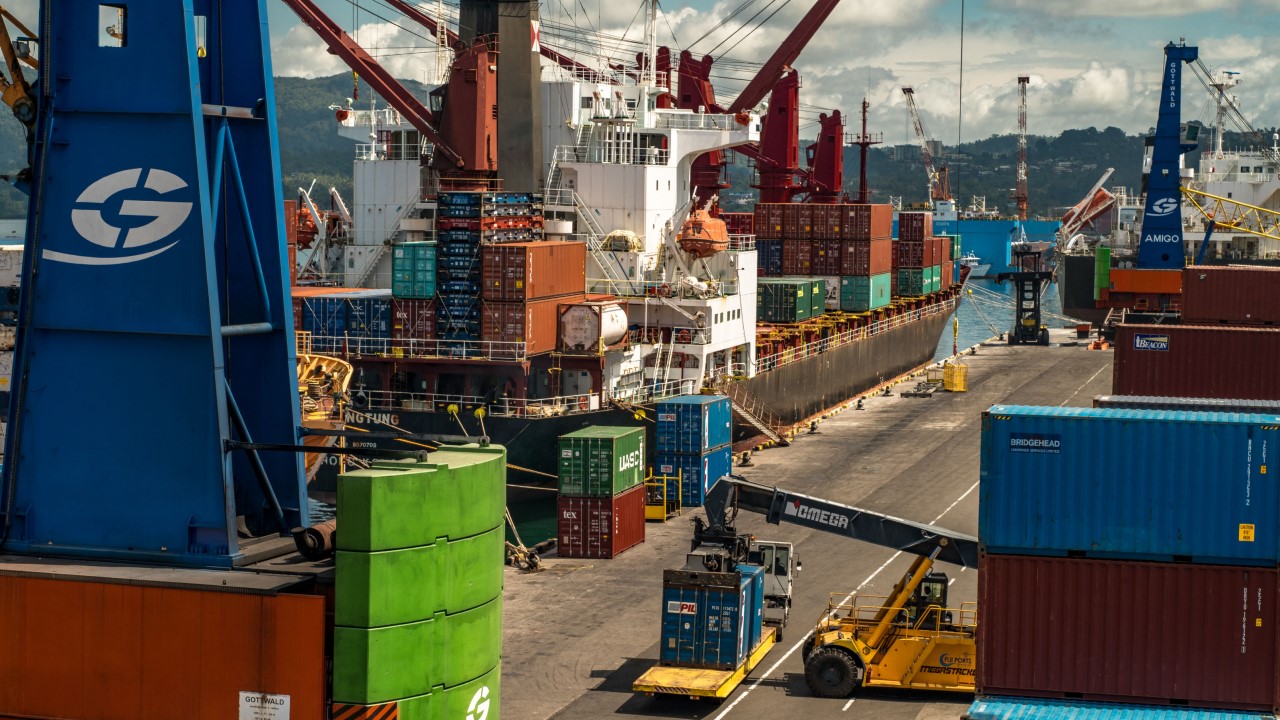
Simply put, collecting ESG risk data about a supplier creates a deep knowledge about the supplier’s business and operations, and helps build stronger relationships with suppliers. Photo credit: ADB.
Adopting a mindset that considers environment, society and governance factors is a critical first step to increase visibility and improve supply chain performance.
This article is published in collaboration with Refinitiv.
Many people associate the environmental, social, and governance (ESG) organizational approach with simply “doing the right thing.” While that is certainly true, the benefits extend well beyond ethical behavior; taking an ESG approach is arguably a smart strategy for conducting business. But does considering ESG factors when selecting suppliers lead to a higher-performing supply chain?
The evidence says yes.
It is indisputable that funds that consider ESG factors when making investment decisions have outperformed the rest of the market. In fact, a Morningstar review of 2019 fund performance found that “returns of 35% of sustainable funds placed in the top quartile of their respective categories, and nearly two-thirds finished in the top two quartiles.” If we assume that fund performance can be used as a proxy for the performance of organizations that make up the portfolio, we can infer that an emphasis on ESG factors as part of a business strategy does positively influence performance.
One explanation for the better-than-average performance is the increased level of transparency brought about from a strong ESG-focused philosophy. At the heart of this approach is the proactive stakeholder engagement and communication that comes with ESG program implementation. When the ESG mindset is extended to an organization’s supply chain, the benefits of engaged stakeholders and transparency align with the characteristics that have historically led to better managed and more resilient supply chains.
The business case for sustainability
Back in 2016, the Harvard Business Review published an article making the business case for sustainability.
Of note was the observation that “environmental and social risks manifest themselves over a longer term, often affect the business on many dimensions and are largely outside the organization’s control.” This is particularly relevant to managing supply chain risk and having the appropriate strategies in place to mitigate the impact of uncontrollable disruptions brought on by these risks.
How does this play out in practice? Fundamentally, it is about identifying which ESG risk factors are relevant to an organization’s supply chain and putting a governance program in place that systematically collects the information that is necessary to assess suppliers against each of these factors. While ensuring business partners are adhering to the ESG standards of the organization is a key benefit to this approach, the greatest value may be the visibility that comes from having aggregated business intelligence data across the supply chain. Simply put, collecting ESG risk data about a supplier creates a deep knowledge about the supplier’s business and operations, and helps build stronger relationships with suppliers.
Supply-chain visibility
Visibility throughout the supply chain is critical to performance under stress, yet this visibility seldom exists. In fact, a 2018 Deloitte survey of chief procurement officers globally found that just 6% of supply chain executives had complete visibility through the nth tier of their supply chain, and 65% of procurement leaders surveyed reported having “limited or no visibility beyond their tier-one suppliers.”
Supply chain transparency should not stop with tier-one suppliers; pushing the visibility down into tier two, tier three and beyond provides an opportunity to better understand the full footprint of your supply chain. This can be done by leveraging the relationships with frontline suppliers, with whom a common ESG value system is already established and empowering them with the knowledge to collect risk data from that next tier down. This allows you to see through several supply chain layers so that previously unknown risks can be identified and mitigated. A comprehensive supply chain map that contemplates the intersection of party relationships and key risks is a powerful tool for managing high-performing supply chains.
Going back to our example of ESG fund performance as a proxy for the performance of ESG-focused supply chains, when speaking on fund performance over the first quarter of 2020, Gabriel Wilson-Otto of BNP Paribas Asset Management noted that sustainable funds “actually outperformed the broader market.” This is an indicator that organizations that adopted an ESG approach to their business were in a better strategic position to respond to the COVID-19 pandemic and the tremendous disruption that it brought. Thus, it follows that improved business and supply chain resilience can be achieved by adopting an ESG agenda.
With enhanced knowledge of suppliers, which an ESG assessment program supports, organizations are inherently in a better position to proactively respond to disruptions in their business environment. As anticipated by many industry thought leaders, the pandemic brought significant disruption to global supply chains, causing organizations to scramble to maintain supply lines. Organizations with stronger relationships and deeper insight into their suppliers’ business and downstream partner networks were able to anticipate disruption risks and work with their suppliers to mitigate the impact.
Adopting an ESG mindset is a critical first step to increase visibility and improve supply chain performance. Putting processes in place to assess suppliers against the ESG factors that are most relevant to your industry and business will provide insights into potential risks and create a dialogue for establishing a strong partner relationship, which will be valuable in times of disruption. And, after all, not only is it the right thing to do, it also makes good business sense.
This article is by Rich Hoffecker, product manager at Refinitiv Due Diligence. If you would like to learn more about third-party risk management solutions, click here.
Addressing the supply chain disruptions caused by COVID-19 was one of the topics explored at SEADS 2022 on 16–17 March. Watch recordings.
Sources:
Jon Hale, Phd, CFA, “US ESG Funds Outperformed Conventional Funds in 2019.”
Tensie Whelan and Carly Fink, “The Comprehensive Business Case for Sustainability.”
Deloitte, “Deloitte Report Finds Leaders Don’t Have Enough Visibility of Their Supply Chain.”
Audrey Cher, “Sustainable Funds Are Outperforming Their Peers During the Pandemic, BNP Paribas Says.”

Refinitiv
Refinitiv has now changed to LSEG.
Refinitiv data and analytics services has become LSEG Data and Analytics. Its customer and third-party risk services are now LSEG Risk Intelligence. Refinitiv Benchmark and Indices have joined the FTE Russell part of LSEG.


